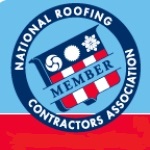East Meadow Roofing: Article About Preventing and Removing Ice Dams
A roofing system that is resistant to weather conditions such as rain and snow that can damage the home. Different types of membranes include modified bitumen, thermoplastic membrane and thermoset membrane. When they are installed on the roof, they reduce water pooling and leaks.
East Meadow roofing contractor answers a question: What happens if the water from the snow dam leaks inside the house?If the water leaks inside the house, the wall insulation becomes wet and starts to sag. The water gets inside of the wall cavities. Moisture gets trapped in the walls and the overall humidity in the house increases. Mold and mildew grows inside the house as well. The paint may start to blister and peel off of the walls. You could become susceptible to developing allergies and other respiratory ailments.

The formation of ice dams can damage the home and potentially injure people on the property. The ice dams appear when melting snow that is falling off the house becomes frozen at the edge of the roof. This condition is attributed to inadequate ventilation on the roof and warm spaces in the attic. Fortunately, there are steps you can take to prevent ice dams from appearing on the house. If ice dams are already a problem, an East Meadow roofing professional can safely remove them.
Ice dams begin to develop when the underside of a roof is warm enough to make snow melt after a winter storm. As the snow melts, the water starts to run down the roof. The water becomes frozen and turns into ice when it hits the cold edge of the roof or gutter. The ice dams gradually gets bigger as more water continues to flow down the roof and turns into ice.
The ice dams may damage the roof, insulation, gutters and other parts of the house. A person can become seriously injured if they are standing near the ice dam and large icicles when they start falling off the edge of the roof.
Have a question regarding skylights or gutters and leaders? Please ask a roofing professional from Long Island Roofing of East Meadow.
If you decide to get rid of the icicles on your own, do not stand directly beneath them as you knock them down.
There are ways to prevent the formation of ice dams. Use a roof rake to clear the snow located near the edge of the roof immediately after a snowstorm. If there is heavy snow and ice on the roof, removing it right away will also prevent sections of the roof from collapsing. Clean the gutters and make sure they aren't clogged. When the gutters are clean, it is easier for the snow and ice to flow off of the house.
If you cannot reach the roof safely, contact a roofing professional to remove the snow and ice dams. Removing the ice dams as soon as possible reduces the likelihood of the water penetrating the roof membrane and getting inside of the house. A professional will be able to assess if any damage has occurred and how much it will cost to fix it.
Long-term preventative measures include getting adequate ventilation for the roof and insulating the attic. The roof wouldn't be warm enough to melt the snow if there was sufficient ventilation through the attic or top floor of the house. Make sure exhaust fans, vent pipes, chimneys, light fixtures, and attic hatches are properly sealed. Install a roof membrane underneath the shingles as an extra barrier to keep water from leaking into the house.









